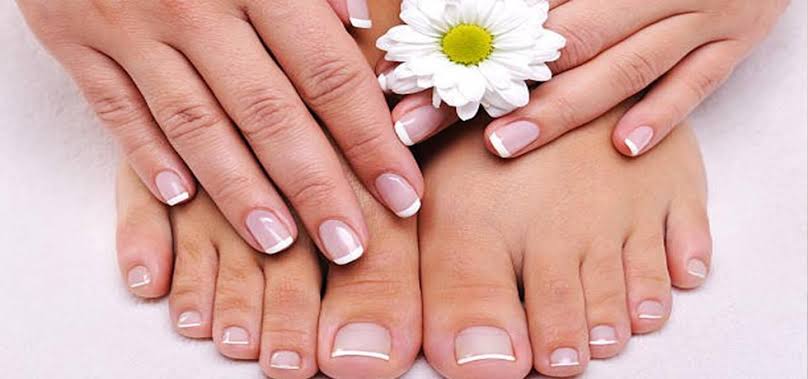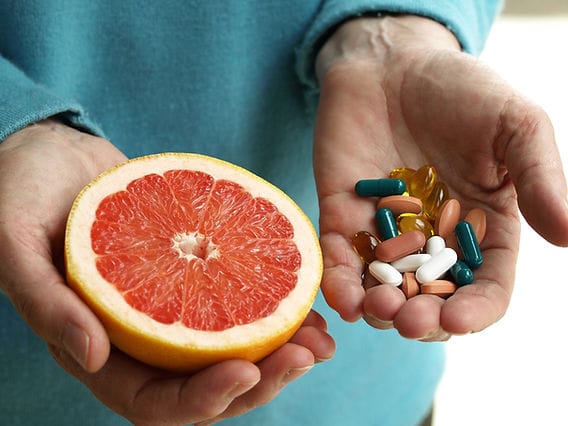
Essential Nail Care Habits for Strong and Shiny Nails
Strong and shiny nails come from consistent care and healthy habits. Regular trimming, moisturizing, balanced nutrition, and gentle handling keep them resilient and attractive. Avoiding harsh chemicals, biting, and overuse of polish protects their natural texture. Using gloves, cleaning properly, and massaging with oils enhance blood flow and strength.
💪 Fitness Guru
40 min read · 4, Oct 2025

Introduction
Your nails are more than just a beauty statement—they reflect your health, hygiene, and self-care habits. Strong, shiny, and well-groomed nails add confidence to your personality and charm to your appearance. But with constant exposure to water, harsh chemicals, poor nutrition, and neglect, nails often become weak, brittle, and dull.
Caring for your nails doesn’t require expensive salon treatments. Instead, consistent habits, the right nutrition, and a little patience can transform your nails naturally.
In this article, we’ll explore the science behind nail health, daily habits to strengthen them, common mistakes to avoid, and DIY remedies for maintaining long-lasting shine and strength. Nails are more than just a part of your beauty; they’re a reflection of your overall health and hygiene. Well-maintained nails can make your hands look elegant, confident, and well-groomed. But achieving strong, shiny, and healthy nails isn’t about frequent salon visits—it’s about adopting a few essential daily habits that protect, nourish, and strengthen your nails naturally. Whether you love painting your nails or prefer keeping them natural, these habits will help you maintain their beauty and strength for the long term.
The first and most fundamental habit for healthy nails is keeping them clean and dry. Nails tend to trap dirt and bacteria easily, especially if they are long. Regular cleaning prevents infections and keeps them free from fungal growth. After washing your hands, it’s important to dry your nails thoroughly because moisture can weaken the nail bed and make it more prone to breakage. Always pat your nails dry gently instead of rubbing them harshly with a towel, which can cause peeling and weakening over time.
Another important step is trimming your nails regularly. Just like your hair, your nails need regular trimming to maintain shape and prevent breakage. Uneven or overly long nails are more likely to chip or tear, which can lead to painful nail bed damage. Use a clean, sharp nail clipper and cut straight across, then slightly round the edges with a fine nail file. Filing in one direction instead of a back-and-forth motion helps avoid splitting and makes the edges smoother.
Moisturizing is another essential part of nail care that many people overlook. Just as your skin needs hydration, your nails and cuticles require it too. Dry cuticles can crack and peel, leading to infection or discomfort. Using cuticle oil or a nourishing hand cream keeps your nails flexible and prevents brittleness. Natural oils like coconut, almond, or jojoba oil are great choices to keep your nails hydrated and shiny. Massage the oil into your nails every night before bed—it improves blood circulation and enhances nail growth while you sleep.
Your diet also plays a major role in nail health. What you eat directly affects the strength and appearance of your nails. Foods rich in biotin, vitamin E, zinc, and omega-3 fatty acids promote nail growth and prevent brittleness. Include eggs, fish, nuts, leafy greens, and whole grains in your diet to supply these essential nutrients. Drinking plenty of water keeps your nails and cuticles hydrated from within. A balanced diet not only strengthens your nails but also gives them a natural shine and healthy color.
Another vital habit is protecting your nails from harsh chemicals. Everyday activities like washing dishes, cleaning, or even using certain nail polish removers can expose your nails to harmful substances that dry them out or weaken them. Always wear gloves when handling cleaning products or when your hands are submerged in water for a long time. Choose an acetone-free nail polish remover and limit the use of strong nail polishes. Acetone can strip away natural oils from your nails, leaving them dull and prone to breakage.
Giving your nails a break from nail polish is also important. While beautifully painted nails can look appealing, constant application of nail polish or artificial nails can suffocate the nail bed. Let your nails breathe by keeping them polish-free for a few days every month. This rest period allows your nails to recover and regain their natural moisture and strength. During this time, you can apply a strengthening nail serum or a natural oil treatment to repair any damage caused by frequent polishing.
Avoid using your nails as tools. Many people tend to open cans, peel off stickers, or scratch surfaces with their nails, but this habit causes unnecessary strain and can lead to cracks or breakage. Instead, use proper tools to handle such tasks. Treat your nails gently—remember they are not meant to bear pressure or force.
Maintaining hygiene of nail tools is equally important. Always clean your nail clippers, scissors, and files after every use to prevent bacteria buildup. If you go to salons, ensure they use sterilized equipment. Sharing nail tools, even among friends, increases the risk of infection and nail fungus. Personal hygiene and safe practices are the foundation of healthy nails.
Regularly buffing your nails can also help enhance their natural shine. Buffing improves blood circulation to the nail bed and smoothens the surface, making your nails look glossy without polish. However, buffing should be done gently and not more than once a week to avoid thinning the nail plate.
Lastly, it’s important to pay attention to signs of damage. If your nails are consistently breaking, peeling, or changing color, it could indicate a nutritional deficiency or an underlying health issue. Weak nails may result from low iron or biotin levels, while yellowing can be caused by fungal infection or excessive use of polish. In such cases, it’s best to consult a dermatologist or healthcare professional for proper diagnosis and treatment.
Incorporating these habits into your daily routine doesn’t require much time or effort, but the results are long-lasting. Healthy nails are not just about appearance—they show how well you care for yourself. When your nails are strong, smooth, and shiny, they not only look beautiful but also make you feel more confident and put-together.
Remember, the key to perfect nails is consistency. Regular trimming, moisturizing, eating a nutrient-rich diet, and protecting your nails from damage will make a visible difference over time. So next time you admire someone’s glossy nails, know that it’s not luck—it’s care and discipline behind that shine. Treat your nails with the same love and attention you give to your skin and hair, and they’ll reward you by staying beautiful, strong, and naturally radiant.
Understanding Nail Health
Nails are made of keratin, the same protein found in your hair and skin. Healthy nails appear pinkish, smooth, and slightly curved, while weak nails may show signs of:
- Peeling or splitting
- White spots or ridges
- Dullness or yellow tint
- Slow growth
- Breakage or rough edges
Several factors affect your nail health—such as diet, hydration, lifestyle, and even stress. The good news is, with consistent care, most nail problems can be reversed naturally.
Common Causes of Weak and Dull Nails
Frequent Water Exposure
Over-washing or long baths strip natural oils from your nails, making them brittle.
Lack of Moisture
Just like skin, nails need hydration to stay flexible and strong.
Nutritional Deficiency
Low intake of biotin, iron, and zinc can cause slow nail growth and dullness.
Harsh Nail Products
Acetone-based removers and poor-quality nail polishes damage the nail surface.
Neglect and Improper Filing
Filing nails in the wrong direction or skipping nail care routines weakens them over time.
Poor Hygiene
Dirty nails can harbor bacteria, leading to infections or discoloration.
Essential Nail Care Habits for Strong and Shiny Nails
1. Keep Nails Clean and Dry
Moisture encourages bacterial growth and softens nails. After washing hands or bathing, dry your nails thoroughly—even the spaces beneath them.
2. Moisturize Regularly
Apply a good hand and nail cream twice a day. For deep hydration, massage your nails with coconut oil, almond oil, or olive oil before bedtime.
3. Trim and File Properly
Regular trimming prevents snags and breakage. Always file in one direction—not back and forth—to avoid splitting. Use a fine-grit file and shape your nails according to your lifestyle (short and rounded for active people).
4. Don’t Bite or Pick Your Nails
Biting damages the nail bed and makes nails uneven and prone to infection. If it’s a habit, keep nails short and use bitter-tasting nail polish as a deterrent.
5. Protect Nails from Chemicals
Wear gloves while washing dishes, cleaning, or gardening. Household cleaners and detergents strip nails of moisture and shine.
6. Use a Gentle Nail Polish Remover
Avoid acetone-based removers; choose mild, nourishing formulas instead. Acetone weakens nails and causes dryness.
7. Avoid Overusing Nail Polish
Let your nails breathe. Keep them polish-free for a few days between manicures to restore their natural oils and strength.
8. Buff for Natural Shine
Buffing increases blood flow and gives nails a healthy, glassy shine. Be gentle—excessive buffing can thin the nail surface.
9. Eat a Balanced Diet
Nutrition plays a key role in nail strength. Focus on foods rich in:
- Protein: Eggs, fish, legumes
- Biotin: Nuts, seeds, sweet potatoes
- Iron: Spinach, lentils, red meat
- Zinc: Chickpeas, cashews
- Omega-3: Flaxseeds, walnuts, salmon
10. Stay Hydrated
Drink 8–10 glasses of water daily. Hydration keeps cuticles soft and prevents peeling or dryness.
DIY Home Remedies for Healthy Nails
1. Lemon and Olive Oil Soak
- Mix 1 tbsp olive oil with 1 tsp lemon juice.
- Warm slightly and massage into nails.
- Leave overnight or soak for 10 minutes.
- Result: Adds shine and removes yellowness.
2. Coconut Oil Massage
Warm coconut oil and massage your nails for 5 minutes daily.
Result: Strengthens cuticles and prevents brittleness.
3. Garlic Nail Treatment
Crush one garlic clove, mix with olive oil, and apply to nails for 10 minutes.
Result: Encourages nail growth and strengthens weak nails.
4. Milk and Honey Soak
Combine warm milk with a spoon of honey and soak your nails for 10 minutes.
Result: Deep hydration and smooth texture.
5. Castor Oil and Vitamin E Mix
Blend equal parts of castor oil and Vitamin E capsule oil.
Result: Stimulates nail growth and adds natural gloss.
Daily Nail Care Routine
Morning
- Wash hands gently with mild soap.
- Apply a lightweight moisturizer or cuticle oil.
- Eat a protein-rich breakfast for nail nourishment.
Midday
- Avoid biting or peeling cuticles during work or study breaks.
- Keep a hand cream handy for reapplication.
- Drink water regularly to prevent dryness.
Evening
- Remove nail polish gently if applied.
- Soak nails in warm oil or milk for 5–10 minutes.
- Massage cuticles and nails with natural oil before bed.
Weekly Nail Care Habits
- Trim and file nails once or twice weekly.
- Exfoliate hands and nails with sugar + olive oil scrub.
- Apply a strengthening nail serum or clear base coat.
- Take a break from nail polish for 2 days.
- Give your nails an overnight oil treatment once a week.
Nail Care Mistakes to Avoid
Skipping Base Coat
Always apply a base coat before nail polish—it protects from staining and strengthens the nail surface.
Cutting Cuticles
Never cut cuticles. Instead, push them gently back after softening with warm water.
Using Nails as Tools
Avoid opening cans or peeling stickers with nails—it causes cracks and chipping.
Ignoring Nail Infections
If nails become red, swollen, or discolored, consult a dermatologist immediately.
Using Hot Water Frequently
Very hot water dehydrates nails. Prefer lukewarm water for washing or soaking.
Nail Health from Within: Nutritional Support
Beautiful nails start from a nourished body. Ensure your diet includes:
- Vitamin B7 (Biotin): Boosts keratin production and prevents brittleness.
- Iron & Zinc: Help prevent white spots and weak nails.
- Vitamin E: Keeps nails hydrated and shiny.
- Protein: Builds nail structure and supports growth.
- Omega-3 Fatty Acids: Add flexibility and prevent cracking.
A smoothie with spinach, banana, flaxseeds, and almond milk makes a great daily nail-strengthening drink!
Nail Myths: Busted!
“White spots mean calcium deficiency.”
→ False. They usually come from minor nail trauma, not calcium lack.
“Cutting cuticles makes nails grow faster.”
→ Nope! It increases infection risk and slows growth.
“Gel polish always strengthens nails.”
→ Not necessarily. Overuse can actually weaken nails by dehydrating them.
“You need salon manicures for healthy nails.”
→ False! Regular at-home care is just as effective when done properly.
“Nails don’t need moisture.”
→ Wrong! Hydration is key for shine and flexibility.
Sample Natural Nail Care Plan
Morning:
Massage nails with almond oil, eat eggs or nuts for biotin boost.
Afternoon:
Keep nails clean and dry, reapply hand cream after washing.
Evening:
File gently, apply cuticle oil, and relax your hands in warm milk + honey soak.
Weekly:
Polish-free day, oil massage, and lemon-olive oil shine treatment.
Conclusion
Healthy, shiny nails aren’t about perfection—they’re about consistency. When you treat your nails gently, nourish them from within, and follow a simple care routine, you’ll notice visible improvements in strength, growth, and natural gloss.
By combining daily moisture, mindful grooming, and nutrient-rich food, your nails will become not only beautiful but also a reflection of your inner health and self-love.
Remember, glowing nails are built one habit at a time—so start today. Pamper your hands, protect your nails, and let their natural beauty shine through effortlessly.
Strong nails aren’t luck—they’re care in action.
Q&A Section
Q1:- Why is nail care important for overall hygiene and appearance?
Ans :- Proper nail care prevents infections, breakage, and discoloration while maintaining clean, polished hands. Healthy nails also reflect good personal hygiene and boost confidence in daily interactions.
Q2:- How often should we trim and file our nails?
Ans :- Trimming every 1–2 weeks and filing gently in one direction keeps nails neat, prevents snagging, and promotes even growth without weakening the edges.
Q3:- Why is moisturizing cuticles and nails essential?
Ans :- Moisturizing with oils or hand cream hydrates dry cuticles, prevents hangnails, and keeps the nail bed flexible, ensuring strong and glossy nails over time.
Q4:- What role does diet play in maintaining strong nails?
Ans :- A balanced diet rich in biotin, zinc, protein, and omega-3 supports keratin production, improving nail strength, texture, and natural shine from within.
Q5:- How can excessive use of nail polish or remover damage nails?
Ans :- Frequent use of harsh removers and non-breathable polishes can strip natural oils, causing brittleness, dullness, and yellowing of the nails.
Q6:- Why should we avoid biting nails or using them as tools?
Ans :- Nail biting introduces bacteria, weakens nail edges, and damages cuticles, while using nails to open objects can cause painful cracks or splits.
Q7:- How does regular cleaning and proper hygiene benefit nail health?
Ans :- Washing hands and cleaning under nails remove trapped dirt and bacteria, preventing infections like fungal buildup and maintaining a fresh, healthy look.
Q8:- Why is wearing gloves important during household chores?
Ans :- Gloves protect nails from harsh detergents, hot water, and chemicals that strip moisture, preventing brittleness and maintaining their natural shine.
Q9:- How can regular nail massages improve nail growth?
Ans :- Massaging nails with warm oils boosts blood circulation to the nail bed, stimulating healthy growth and adding a natural glossy finish.
Q10:- What are the benefits of giving nails a “polish break”?
Ans :- Allowing nails to rest between manicures lets them breathe, repair surface damage, and regain their natural moisture and strength.
Similar Articles
Find more relatable content in similar Articles

The Skin-Food Connection: What to Eat for Acne-Free, Radiant..
What you eat directly shapes .. Read More

How Gardening Counts as a Full-Body Workout...
“Discover how gardening goes b.. Read More

Essential Nail Care Habits for Strong and Shiny Nails..
Strong and shiny nails come fr.. Read More

Anti-Aging on a Plate: Foods That Keep Your Skin Youthful an..
What you eat reflects on your.. Read More
© 2024 Copyrights by rFitness. All Rights Reserved.